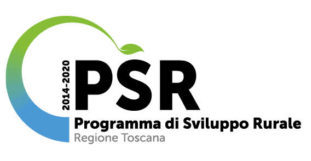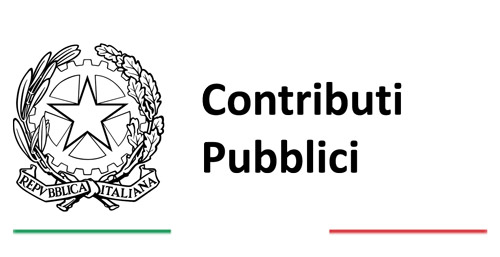DOC Valdarno di Sopra
Valdarno di Sopra is one of the latest DOC among the Denominations of Controlled Origin established with the modern regulations of the 60’s. And yet the production of high quality wines was so deeply rooted in these territories that already in1716 Cosimo III de’ Medici realized the need of protecting Tuscan wines of Chianti, Pomino, Carmignano and indeed Valdarno di Sopra, from forgeries. During the 19th and 20th century, wines produced inValdarno di Sopra were progressively grouped under the Chianti name, initially in a generic way and then in the sub-zone Colli Aretini. The same happened with Carmignano, re-born with its proper name only in the 60’s and with Pomino where it was decided to distinguish their wines under the Chianti Rufina denomination.
For the wines made in Valdarno di Sopra though, its grouping with Chianti wasn’t doing justice to the complexity of local productions. Many “Supertuscan”, acquiring a well known reputation among insiders, were and still are, made with the grapes grown in this area. We are talking of wines made not only with native grapes varietals, mainly pure Sangiovese and also Pugnitello, Foglia Tonda or white Malvasia, but also from foreign grapes like Merlot, Syrah and Cabernet Sauvignon that had little or nothing to share with the Chianti disciplinary.
The need to qualify wines by their place of origin and personal style has required a return to regulations that, as was already understood in the 17th and 18th century, acknowledged the differences and personalities of singular production areas and their high quality significance. We are located in the Eastern and Western slopes of the valley of river Arno (Val d’Arno) between the Arezzo plain and the Florentine hills. Climate conditions are certainly favorable to grape growing and the area is classified as intermediate in the Rocchi scale. This means that negative climatic trends tend to be of weaker intensity compared to the positive ones. The Appennine area of central Tuscany is under the influence of a temperate cold climate but is affected, especially in the summer, by the Mediterranean climate which positively determines the end of the growing cycle allowing a complete and progressive maturation avoiding harmful extreme conditions. Average rainfall varies from 550 and 700 mm, with a concentration of 70% in the autumn-winter period. The DOC Valdarno di Sopra area has overall similar soil and climate conditions but it does include soil variations that contribute to distinguish the quality of the wines here produced. The most represented lithologies are those typical of the most suitable wine growing areas ofTuscany. This area holds rock formations of the Tuscan series from lower Miocene like sandstones with little percentages of calcite, scyst and in minor quantities marl and fine sandstone with quartz and feldspar or higher in carbonates. (A. Scienza e L. Toninato – Milan University – 2003 zonation)
The 1716 decree by Cosimo III acknowledged the high quality wine production that was already extensively consolidated and renowned at the time and was deriving from very ancient traditions.
Etruscans were already making wine in the 4th century BC. In the 1st century Plinio the Eldermentions the lands surrounding Arezzo as the best for winegrowing and refers to the numerous grape varietals here cultivated. In middle ages it’s thanks to monks if grape cultivation is protected from theft and devastation. The Florentine cadastre of 1427 mentions, besides the technical cadastral quotes, the value of the products obtained here in different areas, ranking in fact by merit and price, the wines of the time.
During the agricultural transformations that took place between the 16th and 18th century the first specialized vineyards are grown and viticulture is developed with a more scientific and entrepreneurial attitude. With the decree of Cosimo III this area is historically recognized as a land destined to the production of quality wines.
With the 13th June 2011 Ministerial Decree, this forerunner denomination of origin is institutionalized with the “Denominazione di Origina Controllata” attribution to the wines of the “Val d’Arno di Sopra” or “Valdarno di Sopra”. Actually already in 2005 the wines of Pietravivawere made into a DOC that has now been included in the new Valdarno di Sopra that identifies two sub-zones, Pietraviva and Pratomagno. The disciplinary has been then modified and adjusted to the OCM European laws as DOP wine.
What are the main features of the Valdarno di Sopra DOC.
In the Valdarno di Sopra DOC the following wine types can be made: White, White Spumante, Rosè, Rosè Spumante, Red.
Among grape varietals, the following can be specified: Chardonnay, Sauvignon, Cabernet Sauvignon, Cabernet Franc, Merlot, Sangiovese, Syrah
A kind of passito wine can also be made from white grapes.
The production area covers the municipalities of Cavriglia, Montevarchi, Bucine, Pergine Valdarno, Civitella in Val di Chiana, Castelfranco-Pian di Scò, Castiglion Fibocchi, Terranuova Bracciolini, Loro Ciuffenna, San Giovanni.
The forthcoming future of the DOC Valdarno di Sopra.
After the first years of activity, the Consorzio has decided to amend the disciplinary. Essentially in fact, producers are asking to extend the borders of the DOC to those identified in the Cosimo III decree simplifying the disciplinary by abolishing the 2 sub-zones and expect organic certification as an essential requirement for membership. The reason is the firm belief that wine quality and land protection are closely related. This way the Valdarno di Sopra Denomination would be the first totally organic one in Italy.
Another achievement for the Tuscany of wine!



